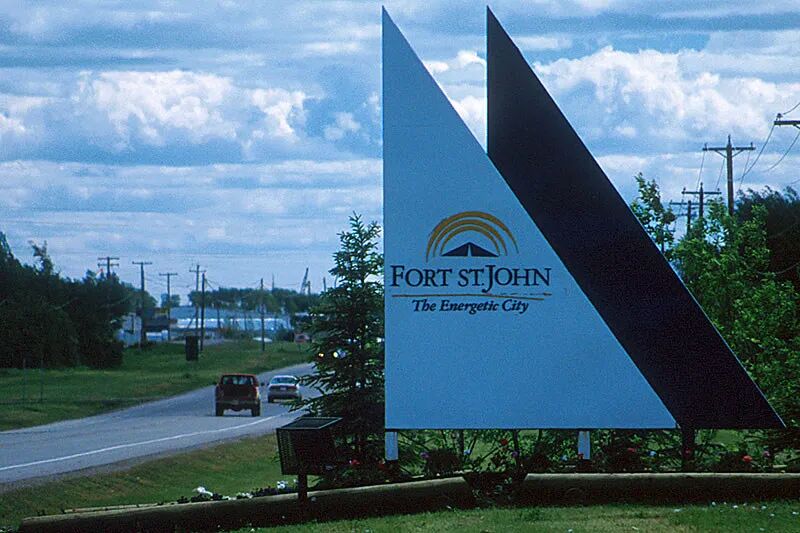Services
Unlock the full potential of your real estate by leveraging integrated, data-driven services that align seamlessly with your overarching business strategy.
Investment
Financials
About Us
With more than three decades of expertise, Sterling Management Services stands out for its excellence in holistic property management and real estate brokerage, spanning strata, residential, and commercial properties.
Insights & Research
Fort St. John Residential Rental Report - Q1 2024

Fort St. John Rental Market Analysis Report - Q1 2024
Executive Summary
This report provides a comprehensive analysis of the rental market in Fort St. John for the first quarter of 2024. It includes an overview of current market conditions, key trends, and factors influencing the rental landscape. The report aims to inform stakeholders, including policymakers, developers, and investors, about recent developments and future projections in the Fort St. John rental market.
1. Introduction
Fort St. John, located in northeastern British Columbia, is a key hub for economic activities such as oil and gas, agriculture, and construction. This quarterly report provides an in-depth analysis of the rental market conditions as of Q1 2024.
2. Methodology
Data for this analysis was collected from various sources, including:
- Canada Mortgage and Housing Corporation (CMHC) rental market reports
- Statistics Canada
- Local real estate listings and rental websites
- Surveys and interviews with local stakeholders
3. Demographic and Economic Overview
Fort St. John is characterized by a diverse population and a robust economy. Key indicators for Q1 2024 include:
- Population: 21,000 (estimated)
- Population growth rate: 1.5% annually
- Median age: 34 years
- Median household income: $95,000
- Unemployment rate: 6.2%
4. Current Rental Market Trends
4.1 Rental Supply
- Total rental housing units: 3,500
- Types of rental properties:
- Apartments: 2,000 units
- Single-family homes: 1,000 units
- Townhouses and duplexes: 500 units
- Vacancy rates:
- Overall: 4.8%
- Apartments: 4.2%
- Single-family homes: 5.5%
- Townhouses and duplexes: 5.0%
4.2 Rental Demand
- Key demographics driving demand:
- Young professionals (ages 25-34)
- Families with children
- Temporary workers in the oil and gas sector
- Rental housing preferences:
- 60% prefer apartments
- 30% prefer single-family homes
- 10% prefer townhouses and duplexes
- Migration patterns:
- Inward migration from other parts of British Columbia and Alberta
4.3 Rental Prices
- Average rental prices (monthly):
- 1-bedroom apartment: $1,100
- 2-bedroom apartment: $1,400
- 3-bedroom single-family home: $2,200
- 2-bedroom townhouse/duplex: $1,800
- Historical rental price trends:
- 5% increase in apartment rental prices from Q1 2023 to Q1 2024
- 4% increase in single-family home rental prices
- 3% increase in townhouse/duplex rental prices
- Comparison with other regions in British Columbia:
- Fort St. John rental prices are 20% lower than Vancouver
- Comparable to Prince George
5. Factors Influencing the Rental Market
5.1 Economic Factors
- Employment trends: Stable employment in oil and gas, moderate growth in agriculture and construction sectors
- Economic cycles: Seasonal variations in demand due to the influx of temporary workers
5.2 Demographic Factors
- Age groups most likely to rent: 25-34 years old
- Household compositions: Predominantly young families and single professionals
5.3 Policy and Regulatory Factors
- Zoning laws: Recent changes to encourage higher-density developments
- Government housing initiatives: Introduction of incentives for affordable housing projects
6. Challenges and Opportunities
6.1 Challenges
- Limited rental housing supply in peak demand periods
- High rental prices impacting affordability for low-income residents
- Economic fluctuations affecting demand, particularly in the oil and gas sector
6.2 Opportunities
- Potential for new rental developments, particularly multi-family units
- Government incentives for affordable housing projects
- Trends in sustainable and energy-efficient housing attracting eco-conscious renters
7. Future Projections
- Expected changes in rental supply and demand for the remainder of 2024:
- Increase in rental supply with new developments coming online
- Steady demand driven by continued economic activity
- Forecast of rental price trends:
- Moderate increase in rental prices (2-3%) expected due to sustained demand
- Potential impact of new developments and policy changes:
- New high-density developments likely to stabilize vacancy rates and rental prices
8. Recommendations
- Strategies for increasing rental housing supply:
- Encourage mixed-use developments
- Streamline approval processes for new rental projects
- Policies to support affordable housing:
- Expand incentives for developers to build affordable units
- Implement rent control measures to stabilize prices
- Encouraging sustainable development practices:
- Promote green building standards
- Support retrofitting of existing properties for energy efficiency
9. Conclusion
The rental market in Fort St. John is influenced by economic conditions, demographic changes, and policy decisions. This report highlights the need for continued monitoring and adaptive strategies to address challenges and leverage opportunities in the rental market.
10. Appendices
- Data tables and charts
- Survey and interview summaries
- Additional resources and references
References
- Canada Mortgage and Housing Corporation (CMHC)
- Statistics Canada
- Local real estate listings and rental websites
- Stakeholder surveys and interviews


